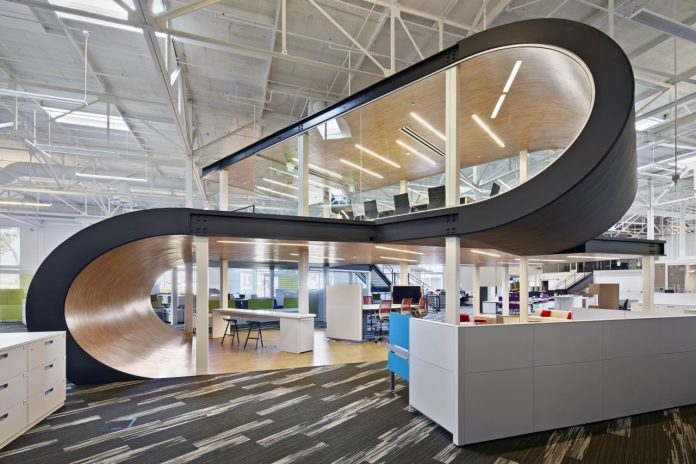When it comes to commercial building design, acoustics often rank high on the list of tenant and occupant concerns. Whether it’s an office complex, hospital, school, or multi-use facility, sound control plays a major role in comfort, productivity, and overall satisfaction. While many people associate acoustics with ceiling tiles or wall insulation, the performance of the subflooring system is just as critical—if not more so.
The subfloor is one of the first elements installed in a commercial build, and it has a long-lasting impact on how sound travels throughout the structure. Choosing the right subfloor can make the difference between a space that echoes and disrupts, and one that feels balanced, quiet, and thoughtfully designed.
For many architects and builders, a steel floor deck has become an essential tool in achieving the right acoustic outcomes without sacrificing structural integrity or speed of construction.
Understanding How Sound Travels Through Floors
In commercial buildings, unwanted noise comes in two primary forms:
- Airborne sound: This includes voices, music, and other sounds that travel through the air and penetrate floor-ceiling assemblies.
- Impact sound: This is generated by direct contact, such as footsteps, dropped objects, or moving furniture, and transmits through the structure itself.
Both types of sound can be mitigated through careful selection of materials and design strategies. Similar to how a logo maker tool provides a strong foundation for brand identity, subflooring is central to this effort, as it forms the base layer for all floor finishes and sits directly above structural systems.
What Makes a Good Acoustic Subfloor System?
A high-performance subfloor must do more than support foot traffic or finished surfaces. To support good acoustic design, it should also:
- Dampen vibrations
- Reduce sound transmission between floors
- Be compatible with sound-absorbing materials like insulation, resilient channels, or floating underlayments
- Provide consistent performance over time
Systems like composite decks or corrugated metal deck flooring offer strong structural support while allowing designers to layer additional sound-dampening components into the floor assembly. Because these decks often feature uniform profiles and dovetail ribs, they help ensure even installation of acoustic treatments.
Why Metal Deck Flooring Supports Better Acoustics
One of the main advantages of a steel floor deck in commercial spaces is its compatibility with advanced floor assembly systems. The deck serves as a sturdy base for poured concrete or composite slabs, which can be designed to incorporate insulation, acoustic mats, or other materials that enhance sound control.
Here’s how metal decking contributes to acoustic performance:
- Structural uniformity: Metal decks provide a stable platform that reduces inconsistencies or air gaps that can worsen sound transmission.
- Design flexibility: Compatible with various floor finishes and underlayments, allowing architects to fine-tune the acoustic environment.
- Pre-planning efficiency: Metal decking is easy to coordinate with ceiling and MEP systems, reducing conflicts and promoting better acoustic isolation between floors.
- Dovetail profiles: Certain metal decking systems offer dovetail ribs, which not only improve strength but also create additional cavities that can be used for insulation or sound control.
Applications Where Subfloor Acoustics Matter Most
Some types of commercial buildings rely heavily on high acoustic performance. In these cases, poor subflooring choices can lead to complaints, regulatory issues, or the need for expensive retrofits later on.
Key examples include:
- Hospitals and healthcare centers: Require sound separation between treatment rooms, offices, and public spaces.
- Schools and universities: Classrooms, lecture halls, and dormitories benefit from quiet, focused environments.
- Multi-tenant offices: Minimizing sound bleed between floors helps maintain confidentiality and productivity.
- Hotels and multi-family housing: Guest satisfaction depends heavily on a peaceful atmosphere.
- Retail or entertainment venues: Acoustics can influence ambiance and customer experience.
In all these cases, thoughtful subfloor design—with products such as steel floor decking—helps achieve better acoustic outcomes from the ground up.
Acoustic Performance and Code Compliance
Many commercial builds must meet minimum requirements for Sound Transmission Class (STC) and Impact Insulation Class (IIC) ratings. These ratings measure how well a floor assembly blocks airborne and impact noise, respectively.
Working with an experienced supplier and selecting a compatible subfloor system helps ensure that your building meets these requirements without relying solely on finish materials. In fact, addressing acoustics early in the structural phase is often more cost-effective than trying to fix it later with thicker carpets or more ceiling panels.
What to Consider When Planning Subfloor Acoustics
If you’re in the design or pre-construction stage, here are a few key considerations to keep in mind:
- Review acoustic performance goals based on the building’s purpose
- Choose a metal deck profile that supports desired span lengths and insulation placement
- Coordinate with MEP trades to avoid sound leaks through penetrations
- Ensure compatibility between the subfloor, slab, and any underlayment or finishes
- Work with your supplier to review testing data and performance ratings
Conclusion
Sound control isn’t just a finishing touch—it starts with the subfloor. As commercial spaces evolve to become more open, flexible, and multipurpose, the need for quiet, well-controlled environments is more important than ever.
By incorporating high-performing structural systems such as steel floor decking early in the commercial design process, you establish a foundation for spaces that are both robust and quiet. It’s a smart choice for builders, designers, and occupants alike.




